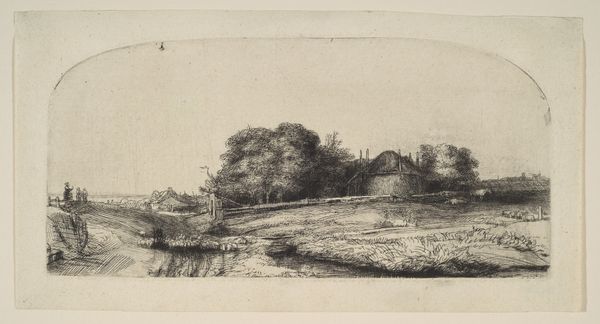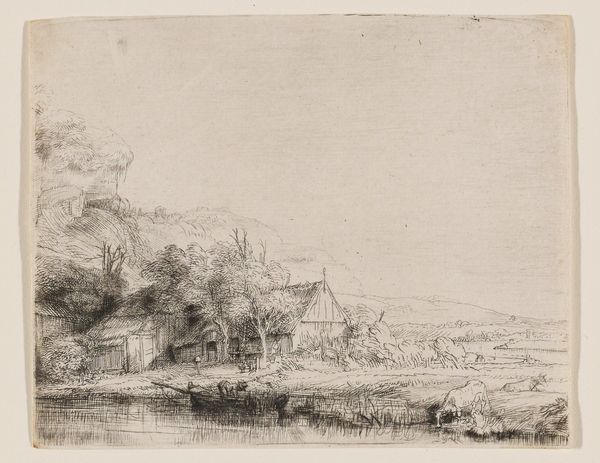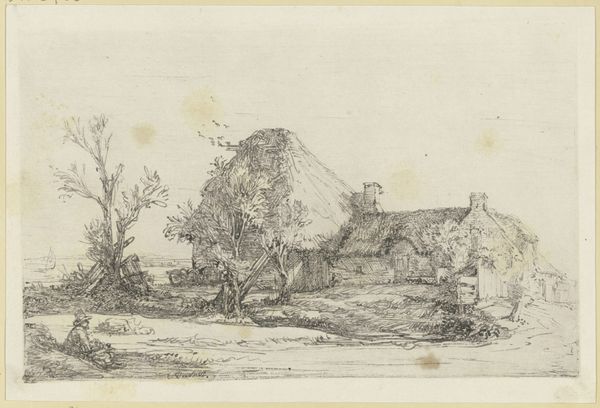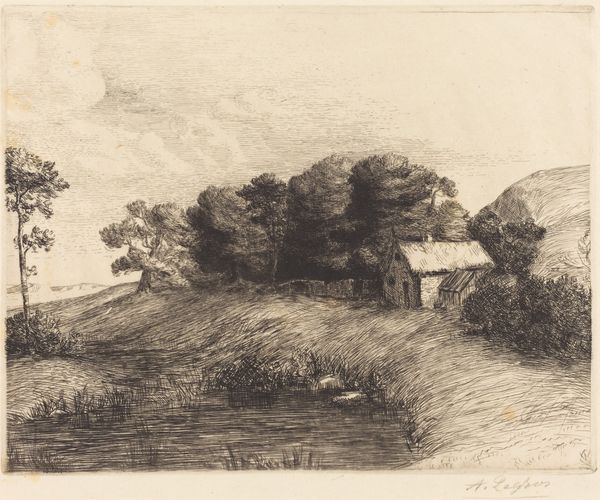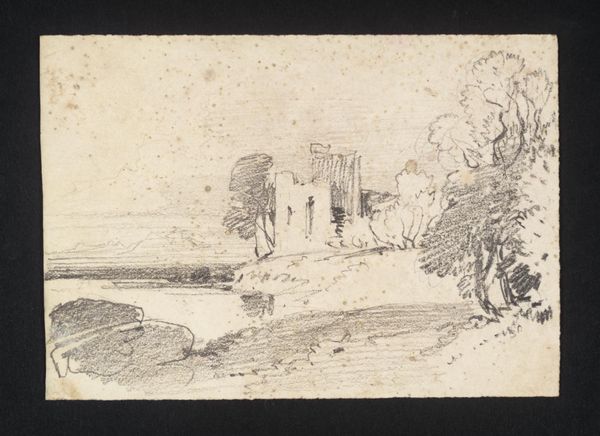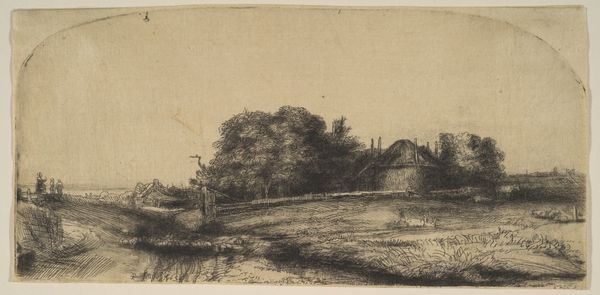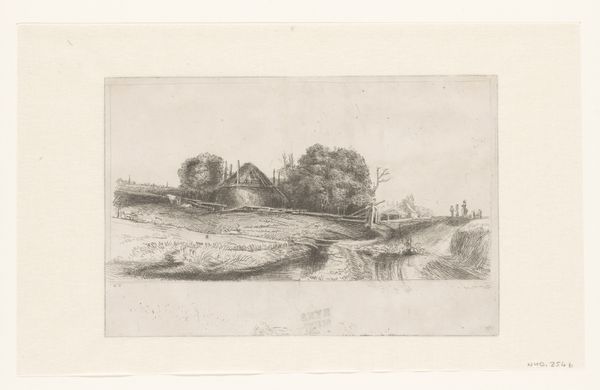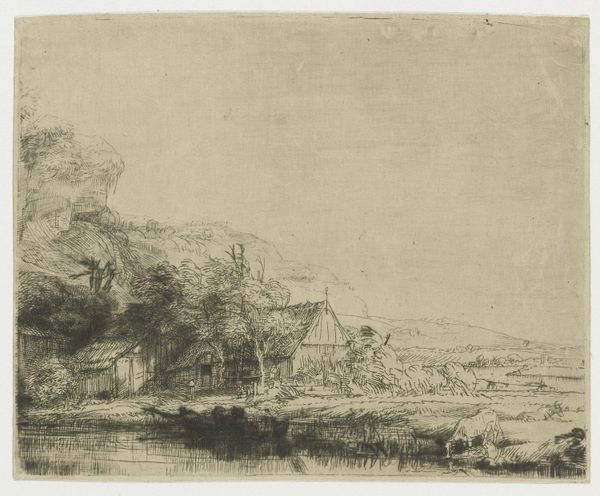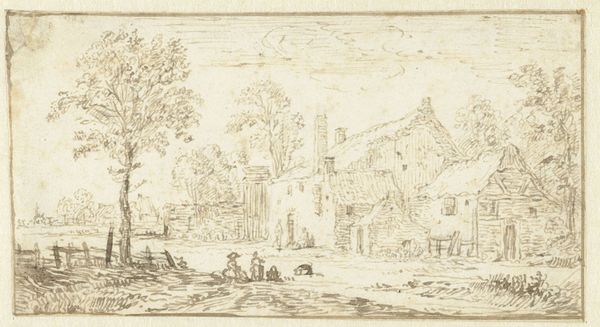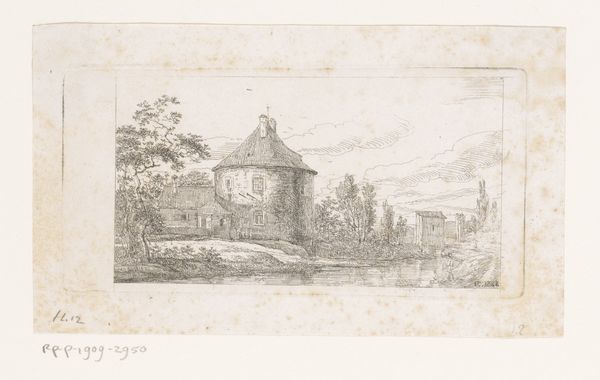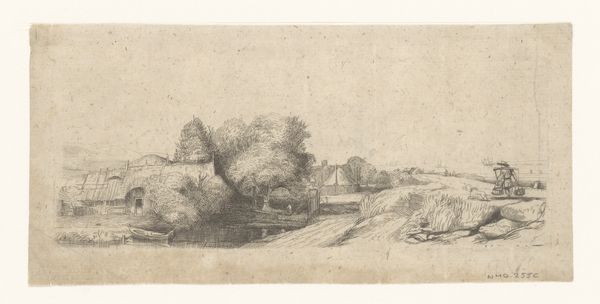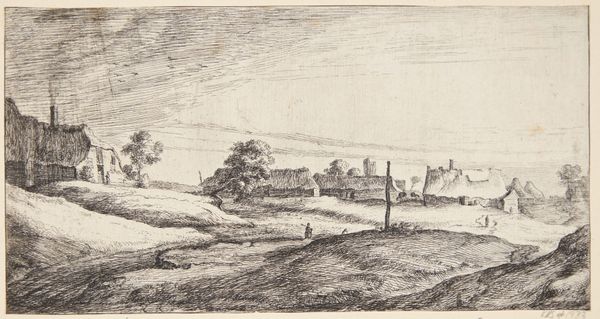
print, etching
# print
#
etching
#
landscape
#
realism
Copyright: National Gallery of Art: CC0 1.0
Alphonse Legros made "Farm at the Monastery" using etching, a process that mirrors the incisiveness with which he approached social themes. Legros, born in France in 1837, lived through rapid industrialization and urbanization, processes which deeply impacted the rural working class. In this etching, the artist presents a scene that is both bucolic and somber. The farm buildings nestle under the shadow of a monastery, suggesting the intertwined relationship between labor, land, and religious institutions. The toil of rural life is palpable, yet there is a certain dignity in the depiction of the laborers amidst their daily tasks. Legros was deeply influenced by the social realism of his contemporaries like Courbet and Millet. His art often served as a commentary on the disparities of wealth and the quiet resilience of those who lived close to the land. "I have always loved the countryside," Legros once said, "it is where I find truth." His deep connection to the land shaped his artistic vision. Legros encourages us to reflect on the lives and labor of the rural population, and the emotional weight of their existence, while also acknowledging their vital role in the societal structure.
Comments
No comments
Be the first to comment and join the conversation on the ultimate creative platform.
